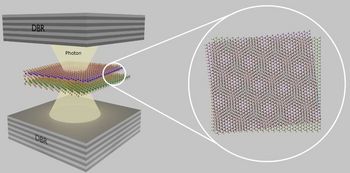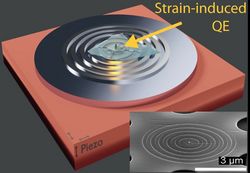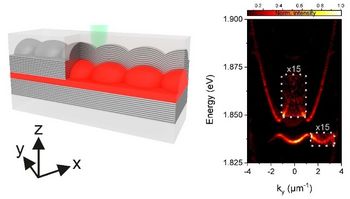Research Directions
Contact
Research Directions
Research Directions
Fundamentals of light-matter coupling with quantum materials:
Fundamentals of light-matter coupling with quantum materials:

High quality microcavities with embedded quantum matter is an ideal to explore the phenomena of light-matter coupling. Transition metal dichalcogenides (TMDC), such as MoS2, MoSe2 and WSe2 are of particular interest to us. Simlilar to graphene, such atomic monolayers can be produced by simple exfoliation techniques- but unlike Graphene- they feature a huge response to optical fields. We investigate the possibilities to exploit these properties to study novel (quantum) phases of light-matter hybrid particles, known as exciton-polaritons. In our recent experiments, we take a decisive step forward and investigate twisted multilayer-structures in our microcavities: so called Moiré van der Waals heterostructures.
Quantum photonics and Nanophotonics with light-matter coupled systems

Solid-state quantum emitters are promising sources of single and indistinguishable photons which are the key to applications e.g. in quantum information science or linear optical quantum computing.
In our group, we investigate the emission properties of conventional and novel solid-state quantum emitters, and their coupling to optical resonator modes.
Our present work centers around exciton localization driven by strain engineering, as well as the Moiré trapping effect in atomically thin crystals.
Synthetic two-dimensional optical lattices

The potential landscapes of microcavity polaritons can be engineered by means of nanotechnology. In our group, we develop new, and versatile techniques to guide and control the light-expansion and propagation on chip, by architecturing complex structured potential landscapes. We further explore the evolution of coherent light-matter states in topologically non-trivial microcavity modes (e.g. Chern modes, edge states) as well as topological excitations in such devices (e.g. Vorticies and Skyrmions). The figure is adapted from Dusel, M. et al. "Room temperature organic exciton–polariton condensate in a lattice." Nature Communications 11.1 (2020): 1-7.


